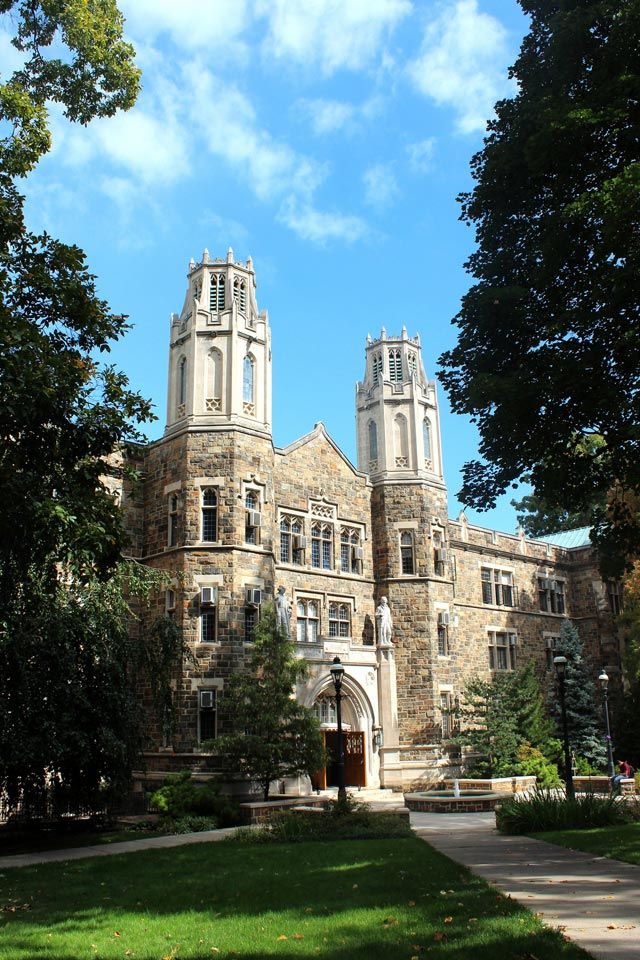Researcher assesses a cell’s behavior in its natural environment.
How do living cells interact with synthetic materials? Finding the answer is critical for understanding cell growth and development in the lab and for developing prostheses that can be successfully implanted in the body.
“Many cell-based therapeutic devices have been proposed in the last 10 years, and most of them started with isolated cells in a petri dish,” says Sabrina Jedlicka, assistant professor of materials science and engineering.
Jedlicka studies adult stem cells, which can be stimulated to grow into bone, muscle and other tissues. She investigates how they are influenced during this process of differentiation by the textures of living organs and by the mechanical and chemical properties of the body.
“The better we can mimic the natural environment in the laboratory,” she says, “the more we can learn about cell behavior. This will help us manipulate cells to maintain stability in a therapeutic environment.”
With Filbert J. Bartoli, professor of electrical and computer engineering, Jedlicka is trying to obtain a more accurate picture of what neural stem cells do when they differentiate into neurons.
Working with mouse neural stem cells that are on the road to becoming neurons, the two researchers are seeking to pinpoint the precise stage of differentiation at which cells can be reimplanted to help regenerate nerves.
“Most of what we know about neurons comes from taking a sample of cells, fixing them and figuring out what proteins or mRNA they are expressing,” says Jedlicka. Researchers can do chemical assays to determine how many of these proteins and/or neurotransmitter molecules are secreted as a whole, she adds, but they can’t determine which cells were stimulated to produce them or when.
“It’s really difficult to tell what state those cells are in unless you can see what is happening in real time,” she says.
Bartoli is developing a biosensor environment to determine when cells secrete chemical markers that are known to correspond to a specific stage of their development. Jedlicka engineers scaffoldlike surfaces that support the cells’ growth. Xuanhong Cheng, assistant professor of materials science and engineering, also collaborates.
“I build surfaces that cells adhere to and differentiate on,” Jedlicka says. “Xuanhong builds surfaces that sense particular molecules, and Fil integrates these surfaces on a sensing apparatus that tells us what is happening.”
Stem cells “like” surfaces based on a host of parameters – Is the surface soft or stiff? Is the topography bumpy, rough or smooth? Are there chemical molecules that are attractive to receptors on the cell surface?
In one project, Jedlicka uses solidstate, 2-D techniques to attempt to mimic the effect of extracellular matrix proteins and growth factors on developing stem cells. Using animal-derived sera or recombinant proteins to stimulate cell differentiation is well-known science, but those techniques are “astronomically expensive” on a large scale and can involve complex FDA regulations.
Jedlicka, searching for a better way, describes in a paper currently under review how she “took a 2-D surface and decorated it with mixed biochemical motifs and successfully differentiated bone cells at a rate similar to that found in natural bone repair.”
The key to her approach lies in understanding the normal development of different kinds of cells.
“If I’m the stem cell in my natural environment and I’m becoming a more differentiated cell, what am I experiencing?” she asks. “What growth factors are there? What extracellular matrix proteins are there? How am I adhering (to adjacent tissue)? What are the mechanics?
“As an engineer, I can’t address all those factors in one surface, at least not yet. The experiments would be massive; I would have to test each variable individually and then in combination. So I break the problem down to ‘what are the minimum requirements to stimulate a cell to do what I want it to do?’”
Four years into her Lehigh career, Jedlicka advises a growing number of undergraduate and graduate students in her lab.
“A lot of students come in without research experience,” she says. “I try to help them think about research from an academic perspective and then give them room to take a project and make it their own.
“Then I have to make sure that they get the resources they need to make themselves shine in a very competitive world.”

